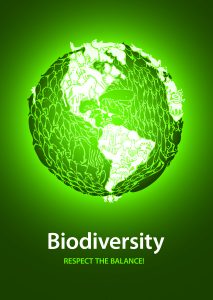A historic deal was reached at the UN Biodiversity Summit (COP15) on Monday, December 19 when 195 countries adopted the Kunming-Montreal Global Biodiversity Framework.
 The aim of this global pact is to halt and reverse the rapid loss of biodiversity by 2030, setting aside at least 30% of the world’s lands, oceans and inland waters for conservation and respecting the rights, roles and contributions of indigenous peoples toward this goal. The Framework designed at COP15 charts a new way forward, a path away from the damaging patterns that led to the destructionof ecosystems and diminishment of species over many decades. Attached is a segment of an article by Brian Roewe, an environmental correspondent with the National Catholic Reporter, on the presence and influence of faith groups at COP15.
The aim of this global pact is to halt and reverse the rapid loss of biodiversity by 2030, setting aside at least 30% of the world’s lands, oceans and inland waters for conservation and respecting the rights, roles and contributions of indigenous peoples toward this goal. The Framework designed at COP15 charts a new way forward, a path away from the damaging patterns that led to the destructionof ecosystems and diminishment of species over many decades. Attached is a segment of an article by Brian Roewe, an environmental correspondent with the National Catholic Reporter, on the presence and influence of faith groups at COP15.
El lunes 19 de diciembre se alcanzó un acuerdo histórico en la Cumbre de las Naciones Unidas sobre Biodiversidad (COP15), cuando 195 países adoptaron el Marco Mundial para la Biodiversidad de Kunming-Montreal.
El objetivo de este pacto mundial es detener e invertir la rápida pérdida de biodiversidad para 2030, reservando al menos el 30% de las tierras, océanos y aguas continentales del mundo para su conservación y respetando los derechos, funciones y contribuciones de los pueblos indígenas hacia este objetivo. El Marco diseñado en la COP15 traza un nuevo camino a seguir, un camino que se aleja de los patrones perjudiciales que condujeron a la destrucción de los ecosistemas y a la disminución de las especies durante muchas décadas. Se adjunta un fragmento de un artículo de Brian Roewe, corresponsal medioambiental del National Catholic Reporter, sobre la presencia y la influencia de los grupos religiosos en la COP15.


